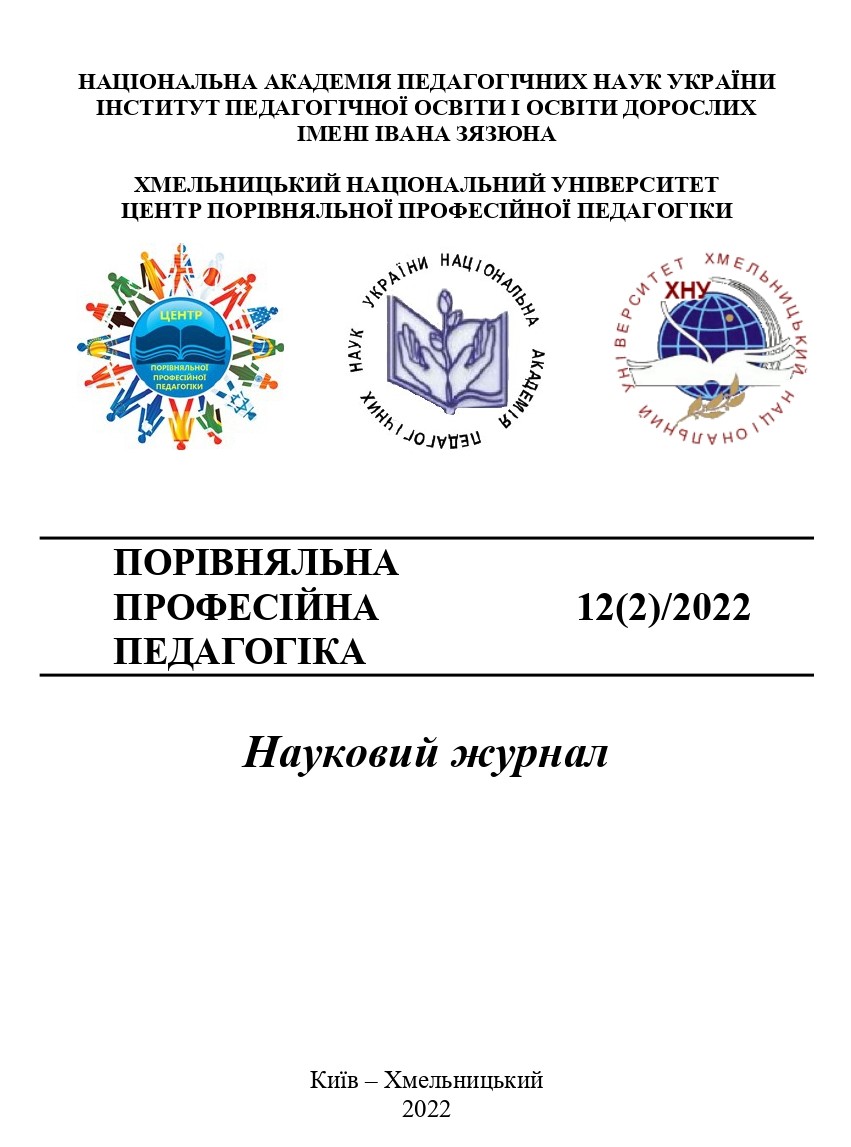BILINGUAL EDUCATION AS A STRATEGIC DIRECTION IN THE DEVELOPMENT OF HUMAN RESOURCES IN CHINA
DOI:
https://doi.org/10.31891/2308-4081/2022-12(2)-10Keywords:
bilingual education, the English language, language policy, China, human resources, educational programs, higher education, ethnic minoritiesAbstract
The article highlights some aspects of the development and implementation of bilingual education in China. Special attention is paid to the internal and external factors that have led to the need to introduce bilingual education in China. The influence of English on the formation and development of China's language policy, as well as the dependence of the country's economy and human resource development on the quality of bilingual education are determined. It is stressed that in the process of China's active participation in the global economy and international cooperation, English has become very important in the country's bilingual education. The article summarizes the studies of Chinese scholars on the interpretation of the concept of "bilingual education". They made it possible to consider it as a process of learning two languages and using these two languages as a means of learning a part or the complete educational program; using another language as a means of learning for language minorities; learning with the dominance of the native language and limited knowledge of a foreign language, etc. Based on the results of experimental studies conducted by Chinese scholars, the expediency of introducing bilingual education in primary and basic schools in large cities and developed regions of the country is confirmed. The features of the introduction of immersion educational programs in Chinese higher education institutions are considered. Controversial issues and problems that exist in bilingual education, in particular, the insufficient number of bilingual teachers, low motivation of students to learn a second language, insufficient pedagogical conditions for the introduction of bilingual education, lack of authentic teaching and learning materials, and others are considered. Particular attention is paid to the measures taken by Chinese educational institutions to improve the level of bilingual education, in particular, the implementation of an adapted model of bilingual education in Chinese higher education institutions.
References
Вайнрайх, У. (1979). Мовні контакти (стан та проблеми дослідження): Пер. з англ. Київ, «Вища школа».
Chu, Y. (2015). The power of knowledge: A critical analysis of the depiction of ethnic minorities in China’s elementary textbooks. Race Ethnicity and Education, 18(4), 469–487. https://doi.org/10.1080/13613324.2015.1013460
Feng, A. (2007). Bilingual Education in China: Practices, Policies and Concepts. Bristol, Blue Ridge Summit: Multilingual Matters. https://doi.org/10.21832/ 9781853599934
Gao, X. & Ren, W. (2019). Controversies of bilingual education in China. International Journal of Bilingual Education and Bilingualism, 22 (3), 267–273. https://doi.org/10.1080/13670050.2018.1550049
Huang, K. (2019). Growth and cycles in China’s unbalanced development: resource misallocation, debt overhang, economic inequality, and the importance of structural reforms. Frontiers of Economics in China, 14 (1), 53–71. https://doi.org/ 10.3868/s060- 008-019-0004-8
Huang, L. (2004). Survey of bilingual education in Shanghai, in D. Mei (ed.), Theories and Practice of English Teaching in the New Century. Shanghai Foreign Language Education Press, Shanghai, 518–537 (in Chinese).
Li, Y. (2020) Bilingual (Zhuang and Han) Education in Urban Guangxi. Major Paper. Retrieved from https://scholar.uwindsor.ca/major-papers/127
Liu, Q., Colak, F. Z., & Agirdag, O. (2021). The extent and predictors of linguistically responsive teaching in Southwest China. International Journal of Bilingual Education and Bilingualism, 25(8), 3022-3036.
Liu, Q., Colak, F. Z., & Agirdag, O. (2022). Celebrating culture and neglecting language: representation of ethnic minorities in Chinese primary school textbooks (1976–2021). Journal of Curriculum Studies, 54(5), 687-711. https://doi.org/10.1080/00220272./ 2022.2045361
Rong, M. (2007). Bilingual education for China’s ethnic minorities. Chinese Education & Society, 40(2), 9–25.
Sawe, B. E. (2018). What languages are spoken in China? Retrieved from: https://www.worldatlas.com/articles/what-languages-are-spoken-in-china.html
Shi, M., Huang, J., & Lu, G. (2022). Meeting the bilingual learning needs of Tibetan minority students in Qinghai Province: A multiple perspective investigation into problems and solutions. Frontiers in Psychology, 13, 937-390. https://doi.org/10.3389/ fpsyg.2022.937390
Swain, M., & Johnson, K. (1997). Immersion education: A category within bilingual education. In Immersion Education: International Perspectives, ed. by K. E. Johnson and M. Swain, 1–16. Cambridge, UK: Cambridge University Press. DOI: 10.1017/CBO9781139524667.003
Tsung, L. T., & Cruickshank, K. (2009). Mother tongue and bilingual minority education in China. International Journal of Bilingual Education and Bilingualism, 12(5), 549–563.
Xing, T. (2001). Objects, characteristics, content, and methods of research in ethnic minority bilingual education in China. Chinese Education & Society, 34(2), 54–74. https://doi.org/10.2753/CED1061-1932340254
Xiong, T. & Feng, A. (2018) Localizing immersion education: A case study of an international bilingual education program in south China. International Journal of Bilingual Education and Bilingualism, 23(9), 1125-1138. https://doi.org/10.1080/ 13670050.2018.1435626
Yu, L. (2008). English–Chinese Bilingual Education in China. In: Hornberger, N.H. (Eds.). Encyclopedia of Language and Education. Springer, Boston, MA. https://doi.org/10.1007/978-0-387-30424-3_124


